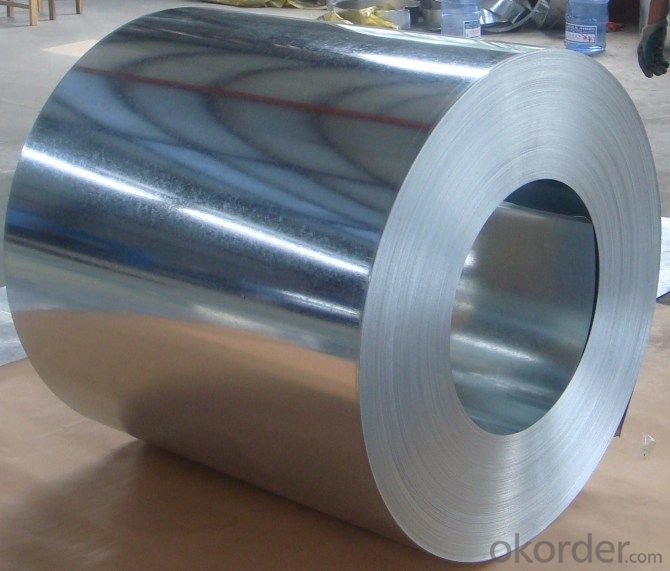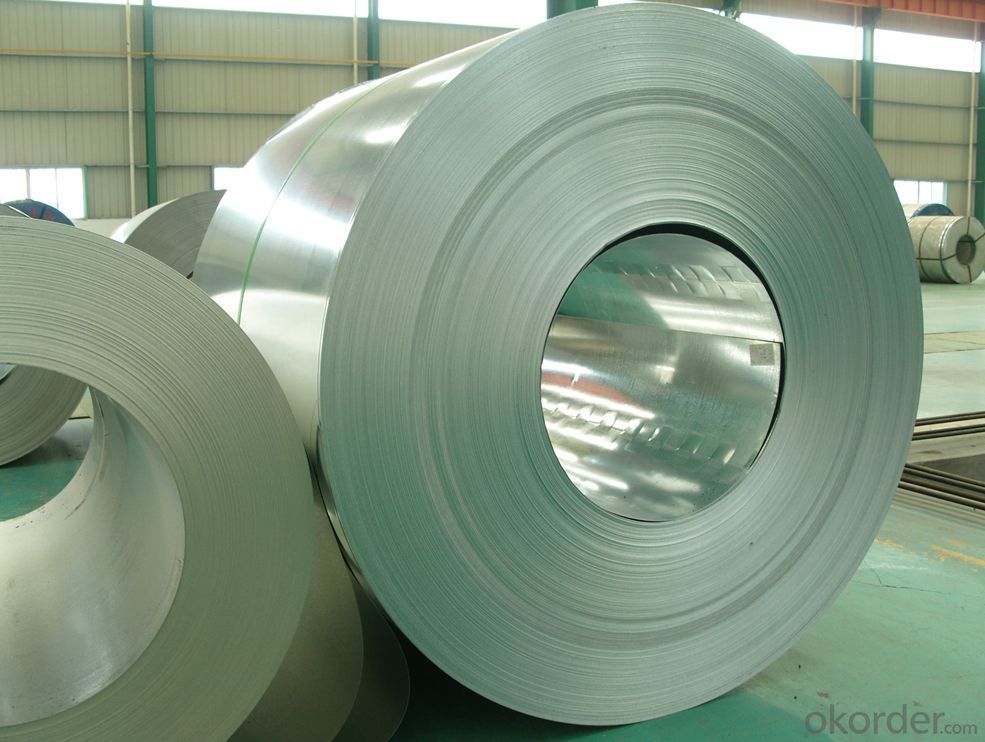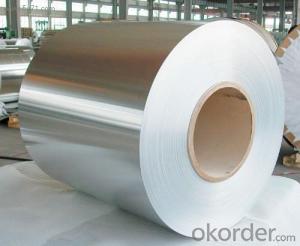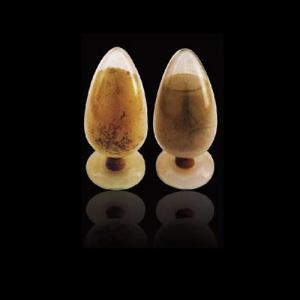Hot-dip Zinc Coating Steel Building Roof Walls--Excellent Process Capability
- Loading Port:
- China main port
- Payment Terms:
- TT OR LC
- Min Order Qty:
- 50 m.t.
- Supply Capability:
- 10000 m.t./month
OKorder Service Pledge
OKorder Financial Service
You Might Also Like
Hot-dip Zinc Coating Steel Building Roof Walls--Excellent Process Capability
1.Structure of Hot-Dip Galvanized Steel Sheet Description:
Hot-dip galvanized steel coils are available with a pure zinc coating through the hot-dip galvanizing process. It offers the economy, strength and formability of steel combined with the corrosion resistance of zinc. The hot-dip process is the process by which steel gets coated in layers of zinc to protect against rust. It is especially useful for countless outdoor and industrial applications. Production of cold formed corrugated sheets and profiles for roofing, cladding, decking, tiles, sandwich walls, rainwater protective systems, air conditioning duct as well as electrical appliances and engineering.
2.Main Features of the Hot-Dip Galvanized Steel Sheet:
• Excellent process capability
• Smooth and flat surface
• Workability, durability
• Good visual effect
3.Hot-Dip Galvanized Steel Sheet Images


4.Hot-Dip Galvanized Steel Sheet Specification
Standard: ASTM, JIS,EN
Grade: CS, DX51D+Z,SGCC, SS 230~550,S220GD+Z~S550GD+Z, SGC340~SGC570
Thickness: 0.18mm~5mm
Width: max 2000mm
Coil weight:3-12 MT
Coil ID:508/610mm
Surface structure: zero spangle, regular spangle or minimum spangle
Surface treatment: Chromate treatment, Oiled/dry, skinpassed/non-skinpassed
5.FAQ of Hot-Dip Galvanized Steel Sheet
1.How to guarantee the quality of the products?
We have established the international advanced quality management system,every link from raw material to final product we have strict quality test.
2. How long can we receive the product after purchase?
Usually within thirty working days after receiving buyer’s advance payment or LC. We will arrange the factory manufacturing as soon as possible. The cargo readiness usually takes 15-30 days, but the shipment will depend on the vessel situation.
- Q:How do monolithic refractories protect the lining of ladles and tundishes?
- Monolithic refractories protect the lining of ladles and tundishes by forming a strong and durable barrier against high temperatures, chemical reactions, and mechanical stresses. These refractories are designed to be resistant to thermal shock and erosion, ensuring that the lining remains intact and unaffected by the molten metal or slag. They also provide insulation, minimizing heat loss and reducing energy consumption. Overall, monolithic refractories act as a reliable shield, extending the lifespan of the ladles and tundishes and preventing any detrimental effects on the lining.
- Q:What are the advantages of using castables in the iron and steel industry?
- Using castables in the iron and steel industry offers several benefits. Firstly, castables have superb thermal insulation properties, which effectively maintain the temperature of the molten metal. This prevents heat loss and ensures efficient energy usage, resulting in cost savings. Additionally, castables exhibit exceptional refractory strength, enabling them to withstand extreme temperatures and harsh operating conditions. This durability prolongs the lifespan of the refractory lining, reducing the need for frequent repairs or replacements. Castables also offer versatility as they can be easily molded into various shapes and sizes, making them highly adaptable for different applications in the iron and steel industry. This flexibility allows for customization in designing the refractory lining to meet specific requirements. Furthermore, castables can be installed quickly and effortlessly, minimizing downtime during installation or maintenance. Their monolithic lining capability eliminates the need for individual bricks or tiles, saving time and effort. Castables are also resistant to chemical attacks from molten metal, slag, and other corrosive substances commonly encountered in the iron and steel industry. This ensures the integrity of the refractory lining and prevents contamination of the metal being processed. Moreover, castables typically require fewer raw materials compared to traditional refractory bricks or tiles, leading to cost savings in terms of material procurement, transportation, and storage. This makes castables a cost-effective solution. Lastly, the use of castables in the iron and steel industry enhances production efficiency by providing a smooth and uniform lining. This facilitates improved heat transfer, metal flow, and reduced downtime, ultimately increasing overall productivity. In conclusion, the advantages of using castables in the iron and steel industry encompass excellent thermal insulation, high refractory strength, versatility, easy installation, resistance to chemical attack, reduced material costs, and enhanced production efficiency. These benefits establish castables as the preferred choice for lining furnaces, ladles, tundishes, and other equipment in the iron and steel manufacturing process.
- Q:How long is the lifespan of monolithic refractories in iron and steel applications?
- The lifespan of monolithic refractories in iron and steel applications can vary depending on several factors such as the specific type of refractory material used, the operating conditions, and the maintenance practices. However, on average, monolithic refractories in iron and steel applications can last anywhere from a few months to several years.
- Q:How do monolithic refractories improve the durability of furnace linings?
- Monolithic refractories play a crucial role in enhancing the durability of furnace linings due to their unique characteristics and properties. These materials are composed of a single, homogeneous structure, unlike traditional brick refractories that consist of individual bricks or tiles. One of the key ways in which monolithic refractories improve the durability of furnace linings is through their ability to eliminate joints and seams. In traditional brick refractories, the joints between the bricks can be weak points where cracks and failures can occur due to thermal expansion and contraction. Monolithic refractories, on the other hand, are poured or gunned into place, ensuring a seamless lining. This seamless structure minimizes the potential for cracks, making the lining more durable and less susceptible to thermal stress. Monolithic refractories also have excellent thermal shock resistance, which is crucial for furnace linings that are subjected to rapid and extreme temperature changes. The monolithic structure allows for better heat transfer and distribution, preventing localized hotspots that can lead to thermal shock and lining failure. This enhanced thermal shock resistance ensures that the furnace lining can withstand the repeated heating and cooling cycles without significant damage, hence improving its overall durability. Additionally, monolithic refractories offer superior erosion and corrosion resistance. Furnace linings are often exposed to harsh chemicals, molten metals, and abrasive materials, which can cause erosion and corrosion over time. Monolithic refractories are designed to resist these corrosive agents, protecting the lining from chemical attacks and physical wear. This resistance ensures a longer lifespan for the furnace lining and reduces the need for frequent repairs or replacements. Furthermore, monolithic refractories provide better insulation properties compared to traditional brick refractories. They have lower thermal conductivity, meaning that heat transfer through the lining is minimized. This insulation property helps to maintain a more stable and uniform temperature within the furnace, reducing thermal stress on the lining and contributing to its longevity. In summary, monolithic refractories improve the durability of furnace linings by eliminating joints and seams, enhancing thermal shock resistance, providing erosion and corrosion resistance, and offering superior insulation properties. These materials are specifically designed to withstand the extreme conditions inside furnaces, ensuring a longer lifespan for the lining and reducing maintenance costs in the long run.
- Q:How do monolithic refractories resist abrasion in the iron and steel industry?
- Monolithic refractories in the iron and steel industry resist abrasion through their inherent properties and design features. These refractories are formulated with high levels of abrasion-resistant materials such as alumina, silicon carbide, and zirconia, which provide excellent resistance to wear and erosion caused by the movement of molten metal, slag, and other abrasive materials in the production processes. Additionally, the monolithic nature of these refractories eliminates the presence of joints and gaps, reducing weak points and enhancing their ability to withstand abrasion.
- Q:How do monolithic refractories improve the efficiency of ladle and tundish purging furnaces?
- There are several ways in which monolithic refractories play a crucial role in enhancing the efficiency of ladle and tundish purging furnaces. To begin with, monolithic refractories possess outstanding thermal insulation properties, enabling them to retain heat within the furnace and minimize heat loss to the surroundings. This results in the furnaces being able to operate at higher temperatures, leading to improved efficiency. The higher temperatures facilitate better steel refining, faster heating and purging of the ladle and tundish, and overall increased productivity. Furthermore, monolithic refractories offer superior resistance to thermal shock. The continuous flow of molten metal in purging furnaces, particularly in ladles and tundishes, subjects the refractories to rapid heating and cooling cycles. Traditional refractories may crack or fail under such thermal cycling, resulting in reduced efficiency and additional downtime for repairs. However, monolithic refractories can withstand these extreme temperature changes, ensuring uninterrupted operation and minimizing the need for frequent maintenance. In addition, monolithic refractories exhibit excellent resistance to chemical attacks from molten metals and slag. During the purging process, ladles and tundishes come into contact with aggressive materials that can erode the refractory lining. Monolithic refractories are specifically designed to endure these harsh environments, preventing erosion and prolonging the lifespan of the furnaces. This resistance to chemical attacks not only enhances efficiency by minimizing refractory wear but also guarantees the production of high-quality steel with reduced impurities. Lastly, monolithic refractories offer great versatility in terms of installation and repair. Unlike traditional refractories that necessitate complex bricklaying techniques, monolithic refractories can be easily shaped and installed, enabling faster and more efficient lining construction. Additionally, monolithic refractories can be effortlessly repaired or patched, reducing downtime and ensuring continuous operation of the furnace. In conclusion, monolithic refractories significantly enhance the efficiency of ladle and tundish purging furnaces through their excellent thermal insulation, resistance to thermal shock and chemical attacks, as well as ease of installation and repair. These properties enable higher operating temperatures, reduced heat loss, increased productivity, and extended furnace lifespan, ultimately improving the overall efficiency and performance of the steelmaking process.
- Q:How do monolithic refractories improve the lining of converters and refining vessels?
- Monolithic refractories enhance the lining of converters and refining vessels by providing superior thermal insulation, chemical resistance, and structural integrity. They eliminate the need for bricklaying, offering a seamless lining with reduced joints, thereby minimizing heat loss and ensuring efficient heat transfer. Additionally, monolithic refractories are highly resistant to the corrosive effects of molten metals and slag, prolonging the lifespan of the lining. Their flexibility enables easy installation and repair, resulting in reduced downtime and improved overall performance of converters and refining vessels.
- Q:How do monolithic refractories perform in rotary kiln applications?
- Monolithic refractories perform exceptionally well in rotary kiln applications due to their high thermal shock resistance, excellent chemical resistance, and superior strength at high temperatures. Their ability to withstand extreme heat and harsh chemical environments makes them ideal for lining the interior of rotary kilns. Additionally, monolithic refractories offer easy installation and maintenance, ensuring efficient and reliable kiln operations.
- Q:How do monolithic refractories perform in high-temperature environments?
- Monolithic refractories perform exceptionally well in high-temperature environments due to their ability to withstand extreme heat without significant deformation or structural damage. They exhibit excellent thermal conductivity, resistance to thermal shock, and maintain their strength and integrity even at elevated temperatures. This makes them ideal for applications such as kilns, furnaces, and other industrial processes where consistent and reliable performance at high temperatures is crucial.
- Q:What are the key properties of monolithic refractories?
- Monolithic refractories are a type of refractory material that are unshaped or shapeless, meaning they do not have a definite form like bricks or tiles. Instead, they are typically composed of a mixture of aggregates, binders, and additives that can be easily molded and installed in various industrial applications. The key properties of monolithic refractories are: 1. High temperature resistance: Monolithic refractories are designed to withstand extremely high temperatures, making them suitable for applications in industries such as steel, cement, glass, and petrochemicals. They can maintain their strength and structural integrity even at temperatures exceeding 3000 degrees Fahrenheit. 2. Thermal shock resistance: Monolithic refractories have the ability to resist thermal shock, which is the sudden change in temperature that can cause cracking or damage to the refractory. This property is essential in environments where rapid heating or cooling occurs, such as in furnaces or kilns. 3. Chemical resistance: Monolithic refractories exhibit excellent resistance to chemical attack and corrosion from molten metals, slag, gases, and other harsh substances. This makes them ideal for use in environments where they come into contact with acidic or alkaline materials. 4. Low porosity: Monolithic refractories have low porosity, which means they have a high density and are less permeable to gases and liquids. This property helps to prevent the penetration of molten metals or corrosive substances into the refractory, ensuring its longevity and performance. 5. Easy installation and repair: Unlike traditional refractory materials like bricks, monolithic refractories can be easily molded and installed in various shapes and sizes. They can be applied by spraying, casting, or ramming techniques, allowing for faster installation and reduced downtime. Additionally, they can be easily repaired or patched if any damage occurs. 6. Good mechanical strength: Monolithic refractories possess adequate mechanical strength to withstand the stresses and pressures encountered during their service life. This ensures their structural integrity, even under high load conditions. Overall, the key properties of monolithic refractories make them a versatile and reliable choice for a wide range of industrial applications where high temperature resistance, chemical resistance, and thermal shock resistance are required.
1. Manufacturer Overview |
|
|---|---|
| Location | |
| Year Established | |
| Annual Output Value | |
| Main Markets | |
| Company Certifications | |
2. Manufacturer Certificates |
|
|---|---|
| a) Certification Name | |
| Range | |
| Reference | |
| Validity Period | |
3. Manufacturer Capability |
|
|---|---|
| a)Trade Capacity | |
| Nearest Port | |
| Export Percentage | |
| No.of Employees in Trade Department | |
| Language Spoken: | |
| b)Factory Information | |
| Factory Size: | |
| No. of Production Lines | |
| Contract Manufacturing | |
| Product Price Range | |
Send your message to us
Hot-dip Zinc Coating Steel Building Roof Walls--Excellent Process Capability
- Loading Port:
- China main port
- Payment Terms:
- TT OR LC
- Min Order Qty:
- 50 m.t.
- Supply Capability:
- 10000 m.t./month
OKorder Service Pledge
OKorder Financial Service
Similar products
New products
Hot products
Related keywords





























